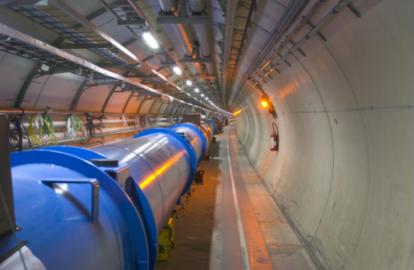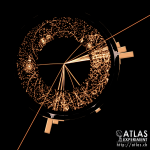 The ATLAS experiment was designed to take advantage of the high-energy collisions at CERN’s Large Hadron Collider (LHC) to study phenomena that involve highly massive particles not observable at other accelerators.
The ATLAS experiment was designed to take advantage of the high-energy collisions at CERN’s Large Hadron Collider (LHC) to study phenomena that involve highly massive particles not observable at other accelerators.
One of its main goals was the search for the Higgs boson , which aimed to answer the fundamental question of the origin of the mass of elementary particles. This project was crowned with success in July 2012, with the announcement of the discovery of a particle which turned out to be the long-awaited Higgs boson.
The ATLAS-LAPP group played a key role in the construction of the electromagnetic calorimeter, which plays a very important role in the detection and interpretation of events resulting from the LHC collisions and the search for the Higgs boson and new phenomena. We continues to participate in its operation and development for new electronic boards for the ATLAS upgrades for Run 3 (2022-2025) and HL-LHC (2029+). The group is also involved in the design and construction of a new tracking detector, for HL-LHC.
The ATLAS-LAPP group includes a large number of researchers, students and post-docs who develop data analyses. They study in detail the behavior of known elementary particles at very high energy, with the aim of testing (or disproving) the standard model of particle physics, or discovering new particles or unknown fundamental interactions. During the last 10 years, 16 thesis have been conducted in the ATLAS LAPP group.


















